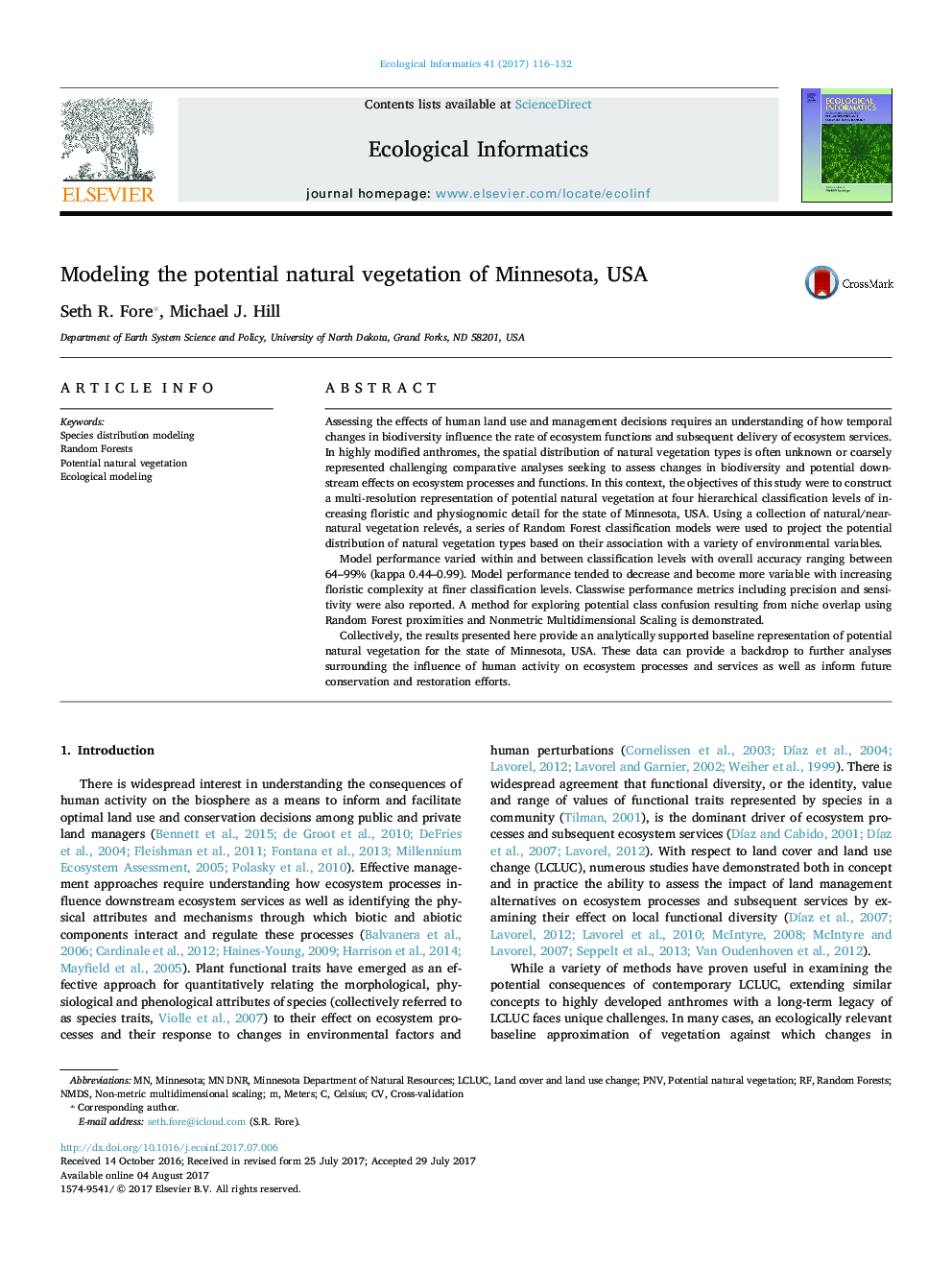| Article ID | Journal | Published Year | Pages | File Type |
|---|---|---|---|---|
| 5741917 | Ecological Informatics | 2017 | 17 Pages |
â¢The potential natural vegetation of Minnesota, USA is approximated.â¢Vegetation units modeled at multiple levels of increasing floristic detail.â¢Spatial distribution of natural vegetation types estimated using Random Forests.â¢Niche overlap assessed using Nonmetric Multidimensional Scaling.â¢Results support multi-stakeholder conservation and restoration efforts.
Assessing the effects of human land use and management decisions requires an understanding of how temporal changes in biodiversity influence the rate of ecosystem functions and subsequent delivery of ecosystem services. In highly modified anthromes, the spatial distribution of natural vegetation types is often unknown or coarsely represented challenging comparative analyses seeking to assess changes in biodiversity and potential downstream effects on ecosystem processes and functions. In this context, the objectives of this study were to construct a multi-resolution representation of potential natural vegetation at four hierarchical classification levels of increasing floristic and physiognomic detail for the state of Minnesota, USA. Using a collection of natural/near-natural vegetation relevés, a series of Random Forest classification models were used to project the potential distribution of natural vegetation types based on their association with a variety of environmental variables.Model performance varied within and between classification levels with overall accuracy ranging between 64-99% (kappa 0.44-0.99). Model performance tended to decrease and become more variable with increasing floristic complexity at finer classification levels. Classwise performance metrics including precision and sensitivity were also reported. A method for exploring potential class confusion resulting from niche overlap using Random Forest proximities and Nonmetric Multidimensional Scaling is demonstrated.Collectively, the results presented here provide an analytically supported baseline representation of potential natural vegetation for the state of Minnesota, USA. These data can provide a backdrop to further analyses surrounding the influence of human activity on ecosystem processes and services as well as inform future conservation and restoration efforts.
